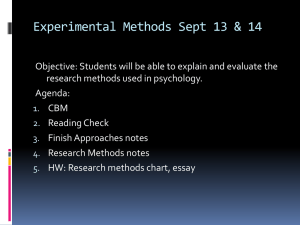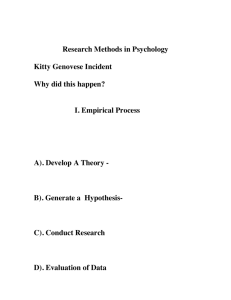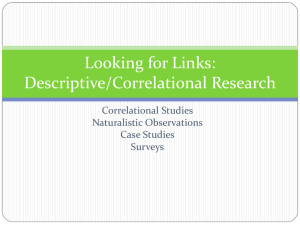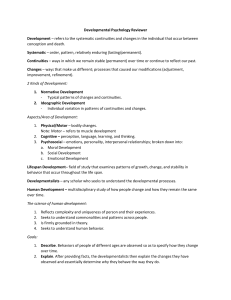SPPA 615 Study Guide Analysis of Communication Disorders (Research Methods)
advertisement
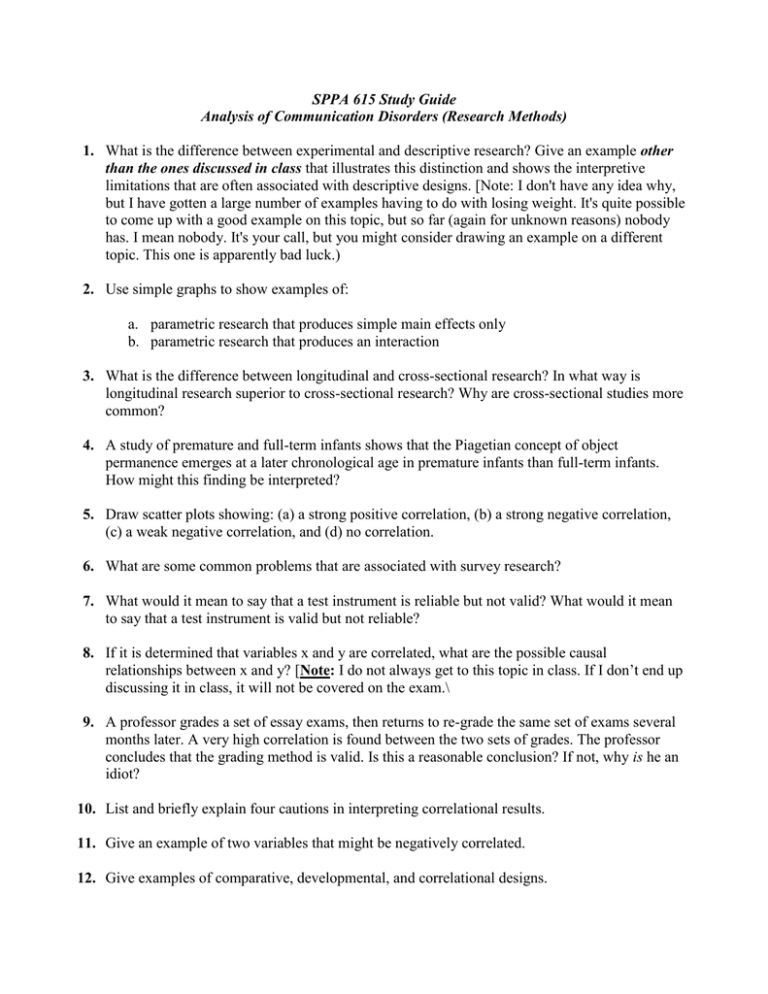
SPPA 615 Study Guide Analysis of Communication Disorders (Research Methods) 1. What is the difference between experimental and descriptive research? Give an example other than the ones discussed in class that illustrates this distinction and shows the interpretive limitations that are often associated with descriptive designs. [Note: I don't have any idea why, but I have gotten a large number of examples having to do with losing weight. It's quite possible to come up with a good example on this topic, but so far (again for unknown reasons) nobody has. I mean nobody. It's your call, but you might consider drawing an example on a different topic. This one is apparently bad luck.) 2. Use simple graphs to show examples of: a. parametric research that produces simple main effects only b. parametric research that produces an interaction 3. What is the difference between longitudinal and cross-sectional research? In what way is longitudinal research superior to cross-sectional research? Why are cross-sectional studies more common? 4. A study of premature and full-term infants shows that the Piagetian concept of object permanence emerges at a later chronological age in premature infants than full-term infants. How might this finding be interpreted? 5. Draw scatter plots showing: (a) a strong positive correlation, (b) a strong negative correlation, (c) a weak negative correlation, and (d) no correlation. 6. What are some common problems that are associated with survey research? 7. What would it mean to say that a test instrument is reliable but not valid? What would it mean to say that a test instrument is valid but not reliable? 8. If it is determined that variables x and y are correlated, what are the possible causal relationships between x and y? [Note: I do not always get to this topic in class. If I don’t end up discussing it in class, it will not be covered on the exam.\ 9. A professor grades a set of essay exams, then returns to re-grade the same set of exams several months later. A very high correlation is found between the two sets of grades. The professor concludes that the grading method is valid. Is this a reasonable conclusion? If not, why is he an idiot? 10. List and briefly explain four cautions in interpreting correlational results. 11. Give an example of two variables that might be negatively correlated. 12. Give examples of comparative, developmental, and correlational designs. 13. In a survey study, why does it matter that surveys are not always returned by potential respondents? [We did not talk about this, but the principle is straightforward. The problem is not simply that some (or even many) of the surveys are not returned. The problem is the potential for sampling bias, by which I mean the possibility that the individuals who return a survey may be systematically different from those who pitch them in the trash. Imagine a survey on attitudes toward gun control. It is possible that strong advocates of gun rights may be more likely to return them, or that strong advocates of gun control laws may be more likely to return them, or even both, leaving more moderate views under-represented. It is hard to know and there is no easy solution to the problem.]
